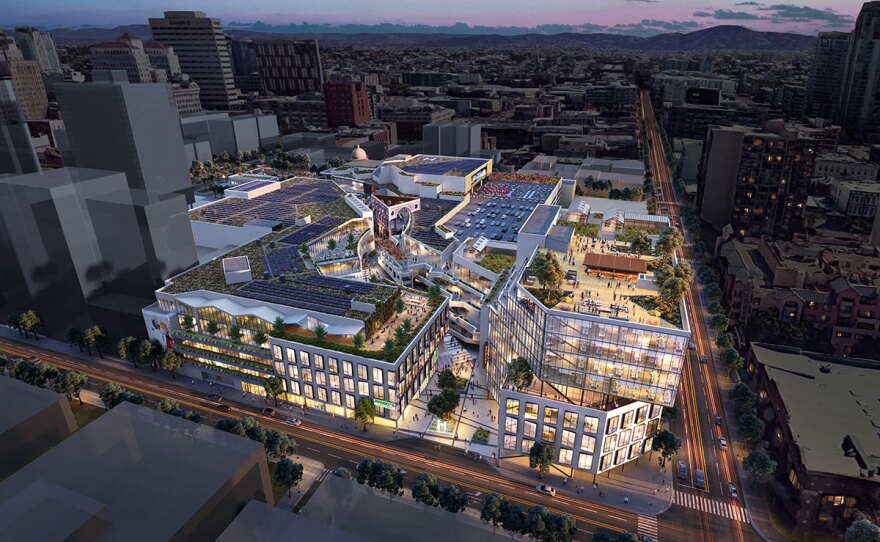The San Diego City Council voted unanimously to approve “Campus At Horton” on Monday. It's a redevelopment plan that would turn Horton Plaza into a tech hub.
Stockdale Capital Partners, an LA-based real estate firm, bought Horton Plaza from Westfield back in August with known intentions of redevelopment. When Stockdale announced the purchase, the firm said their new tech hub plan for Horton was expected to create 4,000 jobs, and generate $1.8 billion each year. The approved plan includes changes to the current land use restrictions to allow for downsizing of retail space, however, Stockdale must pay $6.7 million to the city for the lost retail revenue.
RELATED: City Council Unanimously Approves Plan To Turn Horton Plaza Into Tech Hub
Opponents of the plan argued “Campus At Horton” wouldn’t respect current tenants or their leases, but Stockdale said the current Horton Plaza tenants are welcome to stay in their locations and would not be evicted.
RELATED: Horton Plaza's Role In San Diego History
Project advisor Jimmy Parker and CEO of Downtown San Diego Partnership, Betsy Brennan, met with KPBS Evening Edition Host Ebone Monet to talk about “Campus At Horton.” Here are some of the highlights of that interview.
Q: There's already a small tech hub forming in North County. Why is it right for downtown to also have a tech campus?
Brennan: We have been working with UCSD, other universities and the Economic Development Corporation. In 2018, we identified 140 startups downtown. So there's actually an ecosystem, in downtown, of startups already. This project is going to make that bloom even more. A lot of those tech firms are in the artificial intelligence and drone space. We also have wonderful world-class universities here that give us the talent that can work in all of these new positions that are going to come in Horton Plaza.
Q: What would you say to people who are longtime residents of San Diego, who may be sad to see this landmark go?
Parker: I would say: before you make judgments, see what we do. That's all I can say. I've been in downtown since 1984. I started with the original street scene. I was working in Gaslamp when you couldn't stay there at night. My parents got worried. I was a college student and they were worried because I was working late hours in Gaslamp. And a lot of people said "you're never going to clean that up. It's going to have the peep shows. It's going to have the adult theaters. It's going to have those dive bars." I think that changed, and we were okay with that. Then we saw single-family homes in Little Italy, and yeah, I miss them. I grew up with Little Italy. I went to school in Point Loma and played soccer with those families. I married into those families. The changes happened there with high rises and some of that community character. Yeah, it has changed, but no one would complain how vibrant it is now, and how it's a great place to be as a resident as well as a visitor. So that's why I say give us a chance. Give us a chance to show what we can do.
Q: How does Horton Plaza fit into the overarching future vision of downtown San Diego?
Brennan: Downtown is the heart of the region. We want everyone to feel welcome and excited about coming Downtown. We're building a city for residents. We want people from North County, East County and South County to know that this is their Downtown too. There's been a lot of development in Little Italy and East Village recently, because there was quite a bit of vacant space and opportunities, particularly in East Village. When the central library, ballpark village and Petco Park came about, there was a new vibrancy, focus and understanding that there is opportunity Downtown. So in this area, which was built mainly in the 70s and 80s, with more focus on municipal government and those kinds of things, and the mall was serving then clientele and then residents from all over the region. Right now we have about 70% of people who live downtown, commute out of downtown to go to work either in north, east or south. This [project] can give an opportunity for greenhouse gas reductions and for additional mobility on bike and on foot.







